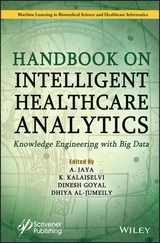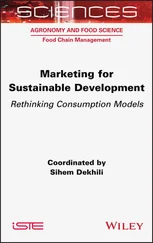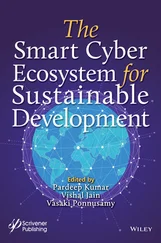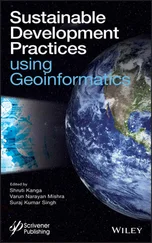24 Chapter 24Figure 24.1 Sperm Swam and the global best value (winner).
25 Chapter 25Figure 25.1 Diagram depicting the flow of optimization process.Figure 25.2 Complete usage of optimization type of problems.Figure 25.3 Complete framework of metaheuristics approach.
26 Chapter 27Figure 27.1 Representation of a three-diode model for a solar cell.Figure 27.2 Different phases of Harris hawks optimization (HHO) [18].Figure 27.3 Convergence curve for TDM (Kyocera KC200GT).Figure 27.4 Convergence curve for TDM (Canadian Solar CS6K-280M).Figure 27.5 Convergence curve for TDM (Schutten Solar STM6 40-36).Figure 27.6 Convergence curve for TDM (SolarWorld Pro. SW255).Figure 27.7 Kruskal-Wallis test performance for TDM (KC200GT).Figure 27.8 Kruskal-Wallis test results for TDM (CS6K-280M).Figure 27.9 Kruskal-Wallis test diagram for TDM (STM6 40-36).Figure 27.10 Kruskal-Wallis test results for TDM (Pro. SW255 model).
27 Chapter 28Figure 28.1 System model of the proposed CSS system with M number of secondary u...Figure 28.2 Illustration showing SVM classifier for two set of data points, mark...Figure 28.3 Illustration of decision thresholds and quantization points.Figure 28.4 (a) SU node consisting of an antenna, RTL-SDR, and RPI SBC. (b) Inte...Figure 28.5 Arrangement of SU nodes. LoS path between PU and SUs is obstructed b...Figure 28.6 ROC for different fusion techniques applied on soft energy values. V...Figure 28.7 ROC for different fusion techniques applied on soft energy values. S...Figure 28.8 ROC plots with EGC decision fusion applied on OQ, UQ, and soft data ...Figure 28.9 ROC plots with KMC decision fusion applied on OQ, UQ, and soft data ...Figure 28.10 ROC plots with SVM decision fusion applied on OQ, UQ, and soft data...Figure 28.11 PD variation with SNR for different  with EGC decision fusion. Val...Figure 28.12 PD variation with SNR for different
with EGC decision fusion. Val...Figure 28.12 PD variation with SNR for different  in case of KMC decision fusio...Figure 28.13 PD variation with SNR for different
in case of KMC decision fusio...Figure 28.13 PD variation with SNR for different  in case of SVM decision fusio...Figure 28.14 PD variation with SNR for different K in case of EGC decision fusio...Figure 28.15 PD variation with SNR for different K in case of KMC decision fusio...Figure 28.16 PD variation with SNR for different K in case of SVM decision fusio...Figure 28.17 PD variation with number of samples for EGC decision fusion.Figure 28.18 PD variation with number of samples for KMC decision fusion.Figure 28.19 PD variation with number of samples for SVM decision fusion.Figure 28.20 PD variation with SNR for different number of SU for EGC decision f...Figure 28.21 PD variation with SNR for different number of SU for KMC decision f...Figure 28.22 PD variation with SNR for different number of SU for SVM decision f...
in case of SVM decision fusio...Figure 28.14 PD variation with SNR for different K in case of EGC decision fusio...Figure 28.15 PD variation with SNR for different K in case of KMC decision fusio...Figure 28.16 PD variation with SNR for different K in case of SVM decision fusio...Figure 28.17 PD variation with number of samples for EGC decision fusion.Figure 28.18 PD variation with number of samples for KMC decision fusion.Figure 28.19 PD variation with number of samples for SVM decision fusion.Figure 28.20 PD variation with SNR for different number of SU for EGC decision f...Figure 28.21 PD variation with SNR for different number of SU for KMC decision f...Figure 28.22 PD variation with SNR for different number of SU for SVM decision f...
28 Chapter 29Figure 29.1 GIoT–based layered architecture for smart irrigation monitoring.Figure 29.2 Monitored parameters in machine learning–based precision agriculture...Figure 29.3 Monitored parameters in edge Computing–based precision agriculture.Figure 29.4 Monitored parameters in GIoT–based precision agriculture.Figure 29.5 Power, costs, and security optimization in GIoT–based precision agri...Figure 29.6 LPWAN technologies’ paper distribution used in GIoT–based agricultur...
29 Chapter 30Figure 30.1 Block diagram of the proposed model for sentiment analysis.Figure 30.2 (a) Comparison with time taken to classify data. (b) Result comparis...
30 Chapter 31Figure 31.1 Proposed approach based fuzzy and A* star techniques with phase spli...Figure 31.2 The problem of overlapping sensors.Figure 31.3 Theoretical description to the overlapping problem present in most w...Figure 31.4 A hypothetical deployment scenario for the deployment phase.Figure 31.5 Deployment phase constraint relation.Figure 31.6 Comparison of coverage through iterations in the deployment phase.Figure 31.7 Travel distance through number of nodes.Figure 31.8 Comparison of iterations through energy consumption.Figure 31.9 Shortest path approach 1.Figure 31.10 Shortest path approach 2.
31 Chapter 33Figure 33.1 Three-dimensional indicators of sustainability performance.Figure 33.2 MICMAC analysis.Figure 33.3 ISM-based model.
32 Chapter 34Figure 34.1 Procedure of sampling from the NHNES 2015–2016.Figure 34.2 The posterior distribution of (1) differences of means (μ M− μ F), (2...
33 Chapter 35Figure 35.1 Convolutional Neural Network. Source: Convolutional Neural Network T...Figure 35.2 Cascaded Convolutional LSTM architecture without dilation.Figure 35.3 Cascaded Convolutional LSTM architecture with dilation.Figure 35.4 Cartesian masks. (a) 4× undersampling. (b) 6× undersampling.Figure 35.5 Reconstruction results of CNN with a Cartesian undersampling rate of...Figure 35.6 Reconstruction results of ConvLSTM with a Cartesian undersampling ra...Figure 35.7 Reconstruction results of dilated ConvLSTM with a Cartesian undersam...
34 Chapter 36Figure 36.1 Multispectral face images collected in six fixed illumination condit...Figure 36.2 Gender classification based on Affine hull method.Figure 36.3 Gender classification based on wavelet average fusion method.
35 Chapter 37Figure 37.1 Total number of new cancer cases of males in 2018 (all ages) [3].Figure 37.2 Total number of new cancer cases of females in 2018 (all ages) [3].Figure 37.3 Colonoscopy equipment [4].Figure 37.4 Polyp present in colon [5].Figure 37.5 Proposed methodology.Figure 37.6 Image quality improvement filters.Figure 37.7 Architecture of VGG16 and VGG19 deep neural networks [24].Figure 37.8 VGG16 model summary.Figure 37.9 VGG19 model summary.Figure 37.10 Polyp detection using VGG19 model.Figure 37.11 Graphical representation of test accuracy and test loss.Figure 37.12 Accuracy comparison of CVC-ClinicDB and new test dataset.
36 Chapter 38Figure 38.1 Proposed exon prediction model.Figure 38.2 Approach used for collecting homologous sequences.Figure 38.3 Steps used for exon prediction.Figure 38.4 Example of multiple sequence alignment consisting of exons and intro...Figure 38.5 Steps used in complete gene prediction.Figure 38.6 Interface for boundary exon predictor.
37 Chapter 39Figure 39.1 Normalized spectra of glucose recorded with Jasco V770.Figure 39.2 System block diagram.Figure 39.3 A three-layer BP-ANN architecture.Figure 39.4 Activation function.Figure 39.5 Flowchart of BP-ANN.Figure 39.6 MSSL vs. iterations.Figure 39.7 Bland-Altman plots. (a) PLSR. (b) BP-ANN.Figure 39.8 CEGA plot. (a) PLSR. (b) BP-ANN.Figure 39.9 Regression analysis. (a) PLSR model. (b) BP-ANN.
38 Chapter 40Figure 40.1 Location map of study area.Figure 40.2 Flowchart of the methodology.Figure 40.3 Mapping of novel COVID-19 of Gujarat state, India. (a) Cases tested ...
39 Chapter 41Figure 41.1 Roadmap of health monitoring system [2].Figure 41.2 Basic contigrade temparature sensor (2°C–150°C) [12].Figure 41.3 A Photoplethysmogram (PPG) waveform (amplitude vs. time) [7].Figure 41.4 CC2530 Development Kit Contents (courtesy: Texas Instruments) [6].Figure 41.5 USB UART [13].Figure 41.6 Overview of ZigBee ports connections [16].Figure 41.7 Roadmap of Z-Stack [4].Figure 41.8 Some more basic devices.Figure 41.9 Screenshot showing the interface of developed app: (a) upside and (b...Figure 41.10 Flow chart of health monitoring system’s mobile application [15].Figure 41.11 The health report of patient [1].
1 Chapter 2 Table 2.1 Truth table for AND gate. Table 2.2 Truth table for OR gate. Table 2.3 Truth table for NOT gate. Table 2.4 Truth table for YES gate. Table 2.5 Truth table for NOT gate. Table 2.6 Truth table for ANDANDNOT gate.
Читать дальше

 with EGC decision fusion. Val...Figure 28.12 PD variation with SNR for different
with EGC decision fusion. Val...Figure 28.12 PD variation with SNR for different  in case of KMC decision fusio...Figure 28.13 PD variation with SNR for different
in case of KMC decision fusio...Figure 28.13 PD variation with SNR for different  in case of SVM decision fusio...Figure 28.14 PD variation with SNR for different K in case of EGC decision fusio...Figure 28.15 PD variation with SNR for different K in case of KMC decision fusio...Figure 28.16 PD variation with SNR for different K in case of SVM decision fusio...Figure 28.17 PD variation with number of samples for EGC decision fusion.Figure 28.18 PD variation with number of samples for KMC decision fusion.Figure 28.19 PD variation with number of samples for SVM decision fusion.Figure 28.20 PD variation with SNR for different number of SU for EGC decision f...Figure 28.21 PD variation with SNR for different number of SU for KMC decision f...Figure 28.22 PD variation with SNR for different number of SU for SVM decision f...
in case of SVM decision fusio...Figure 28.14 PD variation with SNR for different K in case of EGC decision fusio...Figure 28.15 PD variation with SNR for different K in case of KMC decision fusio...Figure 28.16 PD variation with SNR for different K in case of SVM decision fusio...Figure 28.17 PD variation with number of samples for EGC decision fusion.Figure 28.18 PD variation with number of samples for KMC decision fusion.Figure 28.19 PD variation with number of samples for SVM decision fusion.Figure 28.20 PD variation with SNR for different number of SU for EGC decision f...Figure 28.21 PD variation with SNR for different number of SU for KMC decision f...Figure 28.22 PD variation with SNR for different number of SU for SVM decision f...










